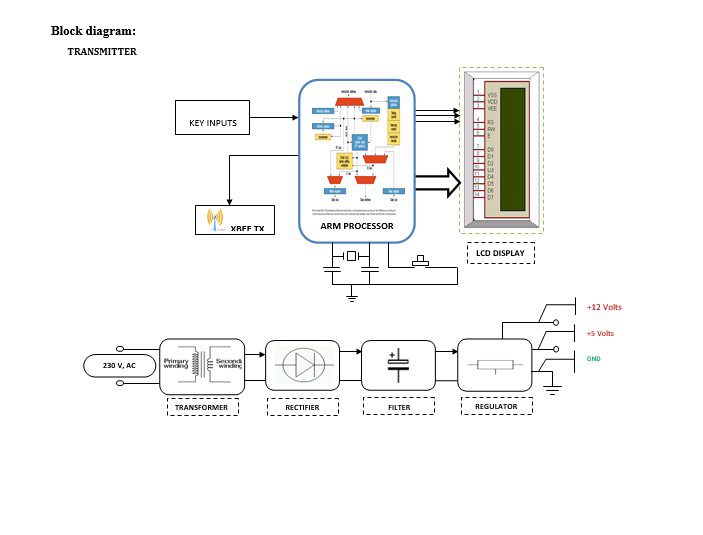Table of Contents
Introduction:

The irrigation system is critical in the development of agriculture in every country. It has been established that efficient irrigation processes have the potential of literally doubling the amount of food a farm processes. Integrating modern technologies in irrigation management systems is one of the ways of enhancing the irrigation processes to optimize the use of water, electric power consumption, and labor costs. The success of irrigation management systems, however, depends on the timely application of the water required to meet the water needs of the crops. The timing for watering farmlands is also influenced by factors such as rainfall, soil moisture level, characteristics of the soil composition, and the nature of crops. Another important factor that is critical to the irrigation management system is the scheduling plan or timetable system, which is mostly developed to maximize crop production with minimal water wastage. Although modern irrigation techniques such as drip lines and sprinkler systems [1, 2] have been introduced to improve farming activities, integrating modern technologies may further guarantee improvement in food security. Regardless of the irrigation techniques used, in most developing countries however, many of the irrigation systems that are operated are often located further from the cities and towns with limited telecommunication infrastructure and high service cost. This somehow makes it difficult for most of the farmers to remotely carry out effective monitoring and control of the irrigation systems. With the emergence of wireless communication technology such as the GSM (global system for mobile communication) networks which is one of the most vital communication systems that is easily accessed globally with very low SMS (short message service) service cost, new approaches are being explored [3] to revolutionize the operations of the irrigation systems.
In this work, we describe a ZIGBEE-based irrigation management system for remote monitoring and control of the irrigation system using ZIGBEE. The conventional wired communication link was used for the direct transmission of the field data to the ARM controller system for operation. The study employed integrated three major systems: hardware system, communication system, and control system. The hardware system is driven by a microcontroller system which controls the system operation using control strategies implemented on the device. The communication system facilitates in-bound and out-bound communication for data transfer of the system elements of the hardware system and the user for control of the irrigation management system.


Block diagram explanation:
Power supply unit:
This section needs two voltages viz., +12 V & +5 V, as working voltages. Hence specially designed power supply is constructed to get regulated power supplies.
Zigbee technology:
ZigBee is the name of a specification for a suite of high-level communication protocols using small, low-power digital radios based on the IEEE 802.15.4 standard for wireless personal area networks (WPANs).
- A very low-cost, low power consumption two-way, wireless communication standard for automation, toys & PC peripherals.
- Low power consumption: 6 months to 5 years battery life for most applications.
- Low cost: At least half the cost of Bluetooth solutions.
- The high density of nodes per network: 250 nodes per network, multiple co-located networks.Data rate requirements: Few bits to 250kbps sufficient.
ARM processor:
ARM is a computer processor-based RISC architecture. A RISC-based computer design approach means ARM processors require significantly fewer transistors than typical processors in average computers. This approach reduces costs, heat, and power use. The low power consumption of ARM processors has made them very popular:
The ARM architecture (32-bit) is the most widely used in mobile devices, and the most popular 32-bit one in embedded systems.
ARM processor features include:
- Load/store architecture.
- An orthogonal instruction set.
- Mostly single-cycle execution.
- A 16×32-bit register
- Enhanced power-saving design.
Buffers:
Buffers do not affect the logical state of a digital signal (i.e. a logic 1 input results in a logic 1 output whereas logic 0 input results in a logic 0 output). Buffers are normally used to provide extra current drive at the output but can also be used to regularize the logic present at an interface.
Drivers:
This section is used to drive the relay where the output is the complement of input which is applied to the drive but the current will be amplified.
Relays:
It is an electromagnetic device that is used to drive the load connected across the relay and the o/p of the relay can be connected to the controller or load for further processing.
Methodology:
A general block diagram of the proposed scheme is given in Figure. The whole system is divided into two parts transmitter and receiver. In the transmitter part, a key input is provided to control the Motor present at the plant location. The pressed key input is simultaneously fed to the ARM7. This is transmitted efficiently and smoothly to the receiver end through wireless Zigbee Communication Protocol (IEEE802.15.4 Standards). The ARM7 at the transmitter end is so programmed that to identify the pressed key for the Motor to come out of the desired or safety limit, a signal will be generated by the ARM7. All the processors and controllers are interconnected through Zigbee. A 32-bit ARM Processor has been used to interface the IEEE 802.15.4 standard, ZigBee protocol. It is useful for farmers to control the motors in the field.
Advantages:
1. Very low power consumption
2. Reliable data transfer
3. Secure
4. Supports a large number of nodes
5. Excellent performance in environments with low SNR
6. Can be used globally
Disadvantages:
It increases the cost whereas digital systems reduce the cost of the system.
Applications:
1. Utilized for irrigation purposes.
2. Very useful for illiterate operation.
3. Can be operated from any place in the world.
4. No need for a manual check for moisture level in the soil.
5. User-friendly.




